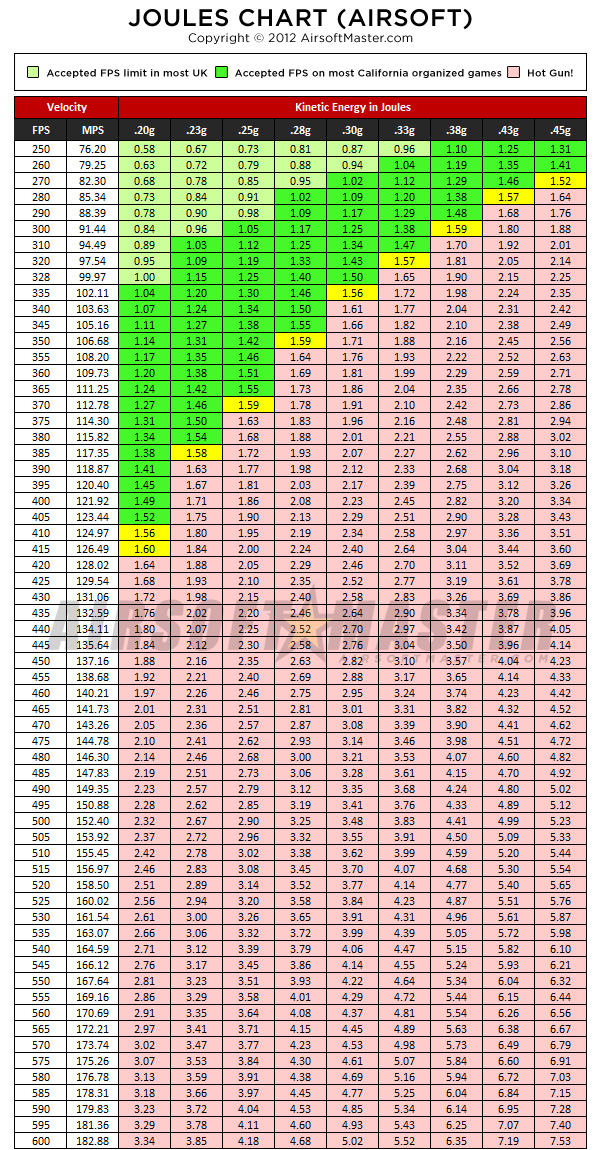Hey all,
I have been meaning to put a quick survey together for the airsoft community to feed into, so that i can develop a better understanding of the science behind Joule Creep.
So, i finally put one together in the hopes of attracting a few inquisitive minds, you can see the form HERE
For those that dont know what Joule Creep is, it is caused by using heavy ammunition in airsoft guns. it affects all guns, but i believe that gas powered guns are the most susceptible due to the way that they operate. the theory behind the issue is that a heavier BB is accelerated more slowly down the barrel, which results in it spending more time in the barrel, recieving a greater impulse and therefore carries more energy than a lighter BB, even if it leaves the barrel slower than a lighter BB.
what this means is that a sniper that passes a chrono at under 500fps on a 0.2g BB might actually be performing well over the safe levels of energy once you load it with heavier ammunition. this survey/science experiment aims to understand just how much of a difference it can make, and why.
if you can, please take any gas powered guns that you have (it doesnt matter if its a pistol, rifle, SMG or sniper, as long as its Green gas or propane that pushes the BB) to a chrono, and do a little science. once you have some results to share, fill them in here, completing the entire form once per gun.
the results will always be freely available to view and use, and once i have a few results in the spreadsheet i will aim to draw some conclusions here.
please spread the word, send the link to anybody you know who uses a gas gun and can spare a minute extra at the chrono station at their next skirmish
Thanks for your participation
I have been meaning to put a quick survey together for the airsoft community to feed into, so that i can develop a better understanding of the science behind Joule Creep.
So, i finally put one together in the hopes of attracting a few inquisitive minds, you can see the form HERE
For those that dont know what Joule Creep is, it is caused by using heavy ammunition in airsoft guns. it affects all guns, but i believe that gas powered guns are the most susceptible due to the way that they operate. the theory behind the issue is that a heavier BB is accelerated more slowly down the barrel, which results in it spending more time in the barrel, recieving a greater impulse and therefore carries more energy than a lighter BB, even if it leaves the barrel slower than a lighter BB.
what this means is that a sniper that passes a chrono at under 500fps on a 0.2g BB might actually be performing well over the safe levels of energy once you load it with heavier ammunition. this survey/science experiment aims to understand just how much of a difference it can make, and why.
if you can, please take any gas powered guns that you have (it doesnt matter if its a pistol, rifle, SMG or sniper, as long as its Green gas or propane that pushes the BB) to a chrono, and do a little science. once you have some results to share, fill them in here, completing the entire form once per gun.
the results will always be freely available to view and use, and once i have a few results in the spreadsheet i will aim to draw some conclusions here.
please spread the word, send the link to anybody you know who uses a gas gun and can spare a minute extra at the chrono station at their next skirmish
Thanks for your participation



